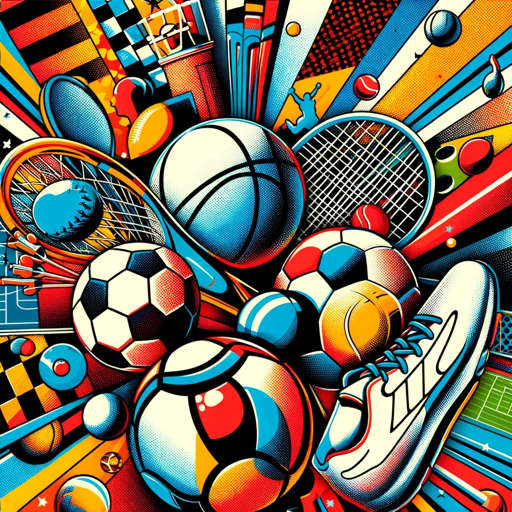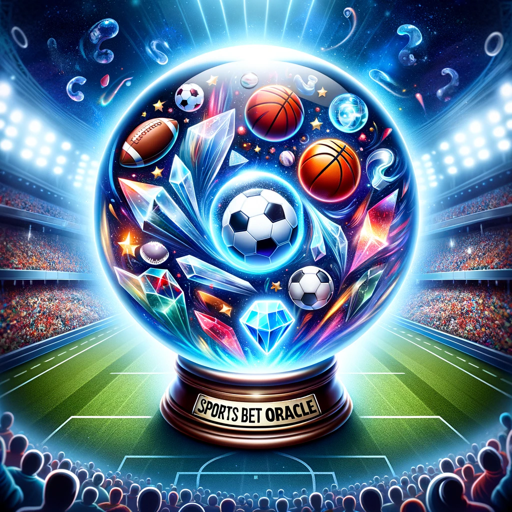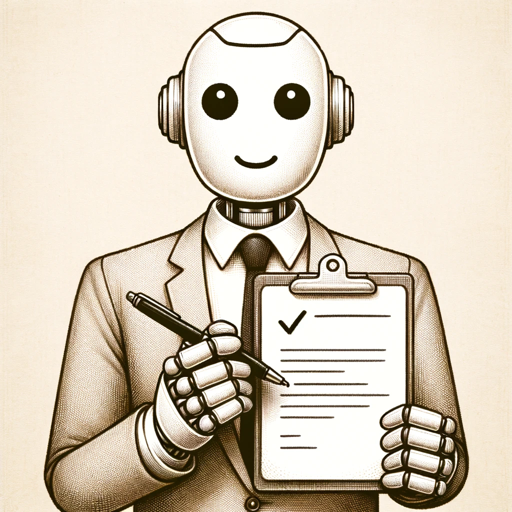tennis-advanced tennis coaching advice
AI-powered tennis coaching tool
How can I improve my serve?
What are some effective strategies against a strong baseline player?
Can you suggest a training routine for endurance?
How do I mentally prepare for a big match?
Related Tools
Load More
Sport Bot Ai & Tips
Advanced sports analysis tool with in-depth, accurate predictions, and personalized data handling.

Sports Oracle
Direct sports betting advisor with definitive answers.

🎲📊 Ultimate Sports Bet Oracle 🏅⚽
Your go-to AI for sports betting insight! Analyzes stats, predicts outcomes, and offers betting strategies to elevate your game. 🎯📈

Apuestas DEPORTIVAS (Pronósticos)
Soccer, Beisbol, Basketball, Voleyball y Futbol americano

Tennis Predict
I provide friendly, engaging tennis analysis for informed betting.

Tennis Insight
Friendly and informed tennis betting tipster with up-to-date web insights.
20.0 / 5 (200 votes)
Detailed Introduction to Tennis
Tennis is a highly strategic and physically demanding sport played on various surfaces, requiring a blend of technical skill, tactical intelligence, and mental resilience. As a 'GPT' customized for advanced singles tennis coaching, my primary functions include offering in-depth advice on advanced techniques, providing guidance on physical and mental training, and helping players develop strategic gameplay. My design purpose is to support advanced tennis players in refining their skills and achieving high-level performance. For instance, I can help a player improve their serve technique by analyzing their current form and suggesting specific adjustments to enhance power and accuracy.

Main Functions of Tennis
Advanced Technique Guidance
Example
Offering detailed advice on improving specific shots such as the backhand slice or topspin forehand.
Scenario
A player struggles with their backhand slice, often hitting it too flat. I can provide a step-by-step breakdown of the proper grip, stance, and swing path to achieve a more effective slice.
Physical and Mental Training Tips
Example
Creating personalized workout routines and mental conditioning exercises.
Scenario
A player needs to build stamina for long matches. I can suggest a combination of on-court drills and off-court conditioning exercises, as well as mental strategies to maintain focus and composure under pressure.
Strategic Gameplay Development
Example
Analyzing opponents' playstyles and suggesting match strategies.
Scenario
Before a match, a player wants to know how to play against a left-handed opponent with a strong serve. I can provide insights into exploiting their weaknesses and suggest specific tactics like targeting their backhand return.
Ideal Users of Tennis Services
Advanced Amateur Players
These players compete in local or regional tournaments and seek to refine their skills to advance to higher levels. They benefit from detailed technical advice and strategic insights to gain a competitive edge.
Professional and Semi-Professional Players
Players at this level compete in national or international circuits and require sophisticated analysis and tailored training plans. They benefit from advanced strategic planning and mental conditioning techniques to perform consistently at elite levels.

Guidelines for Using Tennis
1
Visit aichatonline.org for a free trial without login, also no need for ChatGPT Plus.
2
Familiarize yourself with the interface and available features to maximize your usage.
3
Input your tennis-related questions or scenarios to receive tailored advice and insights.
4
Apply the advice and techniques in your practice sessions or matches for practical learning.
5
Review and reflect on the responses and their effectiveness to continuously improve your skills.
Try other advanced and practical GPTs
Employee Performance Review - SME
AI-Powered Employee Review Tool

IT Assistant
AI-driven solutions for IT professionals

Clone It
AI-powered image cloning made easy
IT Assistant
AI-powered IT expertise at your fingertips

IT Gpt
AI-powered IT solutions for everyone

Summarize it.
Efficient, AI-powered text summarization

Tennis Elbow(Lateral Epicondylitis)
AI-driven insights for tennis elbow management

Nothing special
AI-powered tool for smarter productivity.

Word press Theme Builder
AI-Powered Custom WordPress Themes

WP Theme Assistant by gbase
AI-powered support for WordPress theme creation.

Ordinary Differential Equations I Tutor
AI-powered tutor for mastering ODEs.

smarty boy
AI-powered tool for smarter solutions.

- Skill Development
- Recovery Tips
- Mental Toughness
- Match Strategy
- Serve Improvement
Tennis Q&A
How can I improve my serve technique?
To improve your serve technique, focus on proper grip, stance, and ball toss. Practice consistently and consider video analysis to identify and correct any flaws.
What strategies can help in winning singles matches?
Effective strategies include maintaining strong baseline play, mixing up shots, exploiting opponent weaknesses, and staying mentally tough throughout the match.
How do I handle pre-match nerves?
Handling pre-match nerves involves deep breathing exercises, visualization techniques, and establishing a solid pre-match routine to stay calm and focused.
What is the best way to recover after a tough match?
Recovery strategies include proper hydration, nutrition, stretching, and adequate rest. Using foam rollers or getting a massage can also help in muscle recovery.
How can I develop a strong mental game?
Developing a strong mental game requires practicing mindfulness, setting realistic goals, staying positive, and learning from both wins and losses to build resilience.